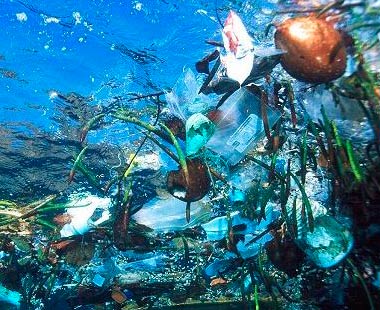
Our beautiful, garbage-infested oceans.
Tomorrow is World Oceans Day, in which we pause for a moment to remember that the existence of any habitable land is basically an aberration and that we’re completely surrounded by a fascinating alternate universe which we’re also polluting and altering pretty effectively and efficiently. Or, as the official site puts it, “our planet’s biggest celebration of the ocean!,” which sounds nicer.
In honor of World Oceans Day (tomorrow!), here’s what’s in the news about our local oceans.
The west ocean (aka, the Pacific)
California this week established a series of marine sanctuaries, banning or restricting fishing in 27 areas comprising 137 square miles off its coast from Oregon to Mexico. If you’re curious about whether your favorite fishing ground is included, here is a map of the newly protected areas.
Why is protecting fish habitats important? Many, many reasons. But here’s perhaps the best one if you live in the Pacific Northwest: not having enough salmon to eat stresses out killer whales. Does this mean killer whales might evolve the ability to breathe and come ashore to pillage Seattle and Portland? No. That’s not how evolution works.
Meanwhile, in Oregon, an unusual bit of driftwood washed ashore yesterday: an intact, 165-ton pier, washed away during Japan’s 2011 tsunami. This is not actually good news:
Along for the ride were hundreds of millions of individual organisms, including a tiny species of crab, a species of algae, and a little starfish all native to Japan that have scientists concerned if they get a chance to spread out on the West Coast.
“This is a very clear threat,” said John Chapman, a research scientist at Oregon State University’s Hatfield Marine Science Center in Newport, Ore., where the dock washed up early Tuesday. ” … It’s incredibly difficult to predict what will happen next.” …
Chapman said the dock float was covered with masses of algae, kelp, barnacles, mussels and other organisms. One square-foot area weighed nine pounds.
“This is a whole, intact, very diverse community that floated across from Japan to here,” he said. “That doesn’t happen with a log or a thrown-out tire. I’ve never seen anything like this.”
The east ocean (aka, the Atlantic, but we’re also going to count the Gulf of Mexico, because)
A report from the Center for Climate and Energy Solutions warned Gulf Coast residents that they should begin the process of adapting to the effects of climate change immediately — though what they can actually do seems to be limited. Infrastructure can be moved (for example, raising the coastal highway Louisiana 1), and fishing patterns can be adjusted, but other than that? It’s hard to take meaningful action to stem ocean acidification or increased hurricane intensity. The report does recommend relying more on alternate energy sources, but it’s unclear if the fossil fuel industry which dominates the region will fully embrace that suggestion. (It will not.)
Speaking of hurricanes, three of the five U.S. cities most vulnerable to hurricanes are on the Gulf Coast: Tampa, New Orleans, and Houston. The other two are Norfolk, Va. (the most vulnerable), and Miami. A major hurricane could do enormous damage to any city, of course; an estimate before Hurricane Irene struck last summer estimated that damage to New York City could reach $7 billion.
Tomorrow. World Oceans Day. Proposed new motto: “Celebrate it — or else.”



